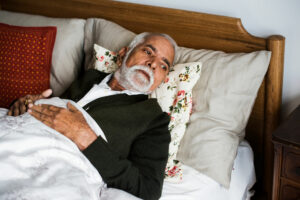Physiotherapist Dr R Senthil Kumar explains which exercises can help you manage vertigo
Vertigo is a feeling of rotation of the surrounding. It is expressed in different ways by people as light-headedness, unsteadiness, a rocking feeling as if traveling in a boat, and dizziness.
It is one of the most common problems above the age of 65 for which people seek frequent medical help. It can cause nausea, vomiting, feeling of tiredness, and can lead to a fall. Falls can be the cause of serious injuries and may even be fatal at times.
We all need to have a good balance to carry out any activity in our daily life. The most common cause is the balance problem is BPPV ie Benign Paroxysmal Positional Vertigo due to alteration in the function of a specialized structure present inside the inner ear called semi-circular canals.
People get vertigo or giddiness which lasts for few seconds especially when they change the position like rolling to one side in the bed, getting up from bed, etc. Other causes are neuritis (inflammation of the vestibular nerve), Meniere’s disease, migraine leading to vertigo, sometimes a type of stroke, postural hypotension (reduced BP during getting up from sitting or from bed), heart failure and taking more medications for various illnesses.
When a person gets vertigo, they need to consult a medical specialist such as a neurologist or an ENT specialist. After proper diagnosis and medications are prescribed, there are specialized exercises that should be followed with the guidance of a physiotherapist trained in vertigo treatment. Physiotherapists will assess and do repositioning maneuvers and prescribed suitable exercises. According to the cause of the giddiness and imbalance, the exercise program will change.
Here are some gentle exercises suitable for senior citizens, but they must be first approved by a physiotherapist for your condition.
Brandt-Daroff exercises
The Brandt-Daroff exercises are a series of movements that can help control certain types of vertigo. They’re often used to treat benign paroxysmal positional vertigo (BPPV), which makes you suddenly feel like you’re spinning.
Start by sitting down on the edge of a couch or a bed. Lie down on your left side, turning your head to look up as you do so. Try to do both of these movements within one or two seconds. Keep your head looking up at a 45-degree angle for about 30 seconds. Sit up for 30 seconds. Repeat these steps on your right side. Do this four more times, for a total of five repetitions on each side. Sit up. You may feel dizzy or light-headed, which is normal. Wait for it to pass before you stand up.
Gaze stability
Hold a card with a picture, in front of you approximately at a distance of half a meter. Now look at the picture on the card and slowly move the head one side without changing the vision fixed from the card. Repeat this opposite side similarly. Continuously do this exercise for one to two minutes. This exercise also can be performed two to three times a day.
Single leg stance
The single-leg stance is a very effective exercise for improving balance. Stand behind a chair and hold onto the chair back with both hands. Slowly lift one leg off the ground. Maintain your balance standing on one leg for five seconds. Return to the starting position and repeat five times. Perform the same with the opposite leg.
Unassisted standing from a chair
Sit on a firm chair and stand without using your arms for balance. This is to strengthen your hips, knees, and ankles. This strength training will help maintain balance and prevent falls.
Neck exercises
There are several easy-to-do neck exercises that can be very effective for vertigo. All of them have to be done while sitting in an upright position. A strong and flexible neck can reduce occurrences of dizziness.
Neck Flexion – the movement in which the chin is lowered down toward the chest.
Neck Extension – the neck is extended, as in looking upward toward the ceiling.
Neck Rotation – lateral rotation to the left and to the right—this is simply direct lateral rotation to either side. Slowly turn the head to the left, then to the right.








